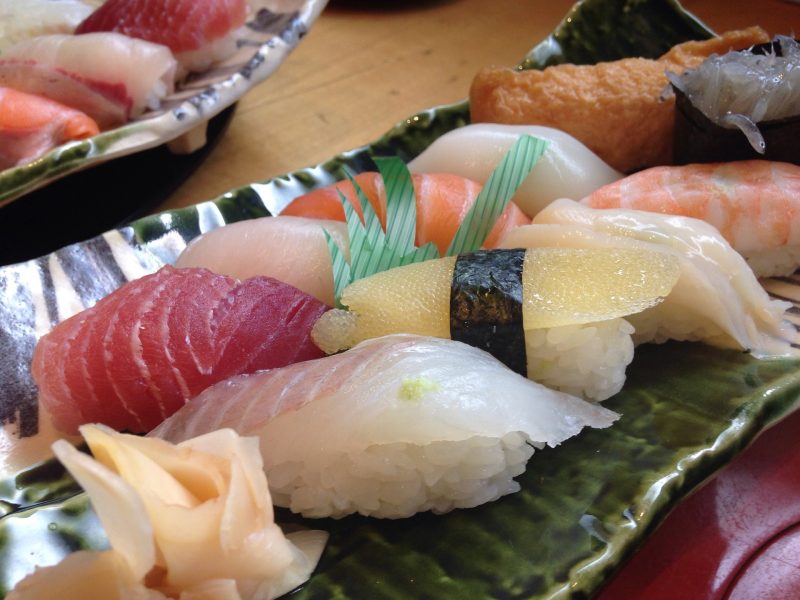Why Take-Out Sushi Has ‘Grass’ in Between Pieces
When you order sushi to-go, you commonly see a dollop of wasabi, a few pieces of ginger, and a piece of plastic grass with your food.

Have you ever wondered why chefs include that tiny piece of decorative grass with your sushi? Well it turns out, that piece of grass isn’t just for decoration. That sliver of plastic comes as a replacement for a centuries old tradition, according to the New York Times.
“It comes from Haran,” said Chef Masa Sasaki of Sasaki Restaurant in San Francisco. “Ha is leaf. Ran in orchid or lily.”
People use haran in order to prevent food smells and flavors from transferring from one another. For example, from fish to rice. Japanese chefs often use bamboo leaves, which not only prevent food from sharing flavors, but are also antimicrobial which slows down the growth of bacteria.
Baran is such a time-honored traditional in Japan, that the art of cutting leaves into different patterns is known as sasagiri.
This Sushi Chef Turns Bamboo Leaves Into Stunning Works of Art#sasagiri via @SAVEURMAG https://t.co/kozvHGj6m7 pic.twitter.com/bB4wqGkKiN
— Tiger Corporation (@tigercorpusa) August 17, 2016
In recent decades, the leaves have been replaced by plastic in both Japan and America. Although plastic doesn’t have the same antibacterial properties as bamboo, they are much more affordable and are still able to separate flavors.
Each piece of plastic grass costs about 0.006¢, which equals $6 per 1000 boxes of sushi.
The post Why Take-Out Sushi Has ‘Grass’ in Between Pieces appeared first on NextShark.
Contributer : NextShark



 Reviewed by mimisabreena
on
Thursday, June 20, 2019
Rating:
Reviewed by mimisabreena
on
Thursday, June 20, 2019
Rating:














No comments:
Post a Comment